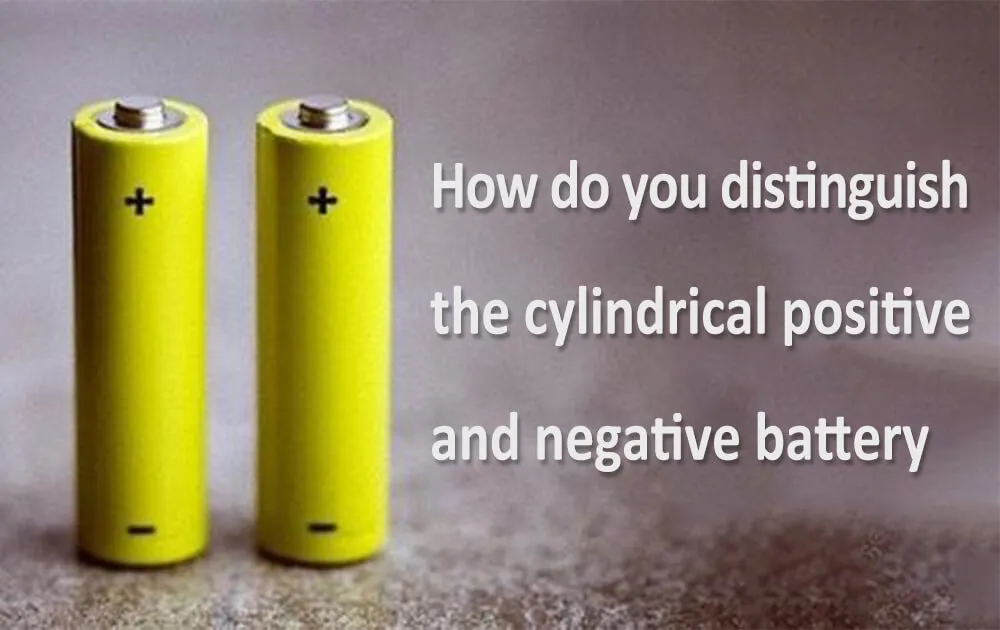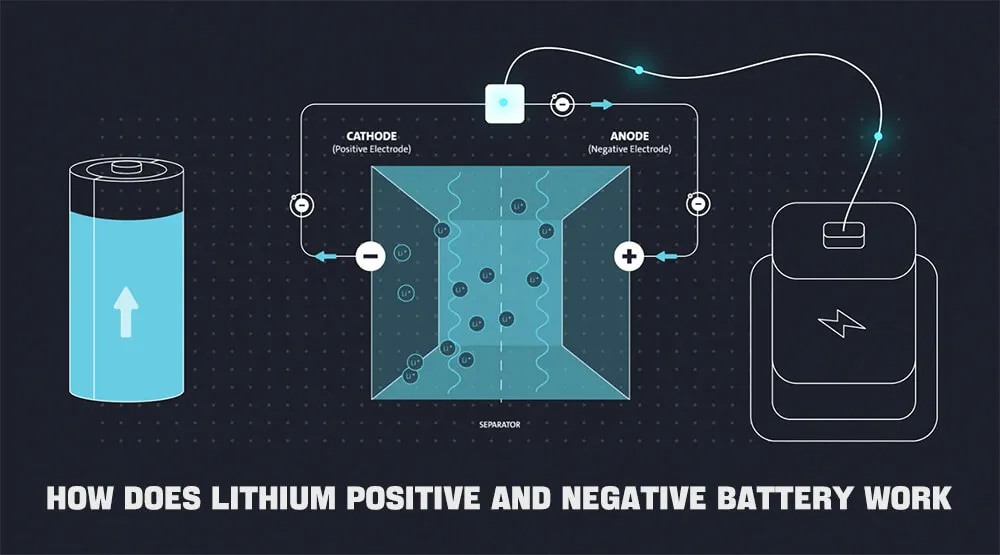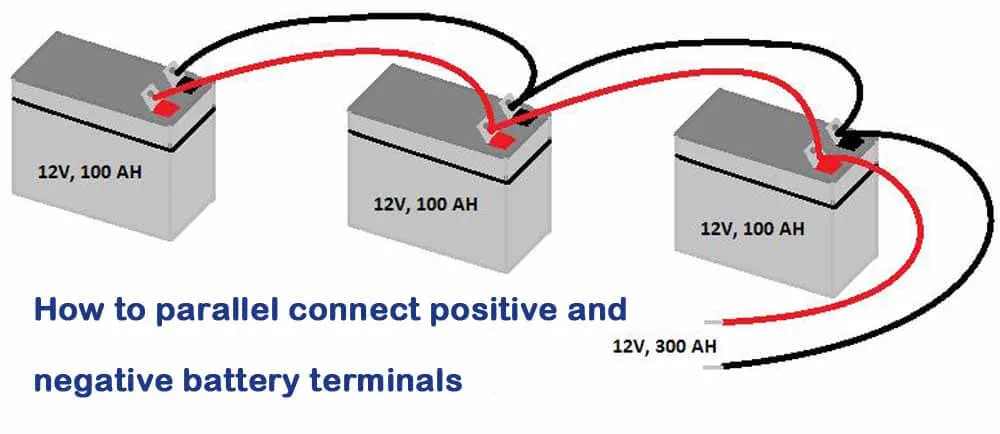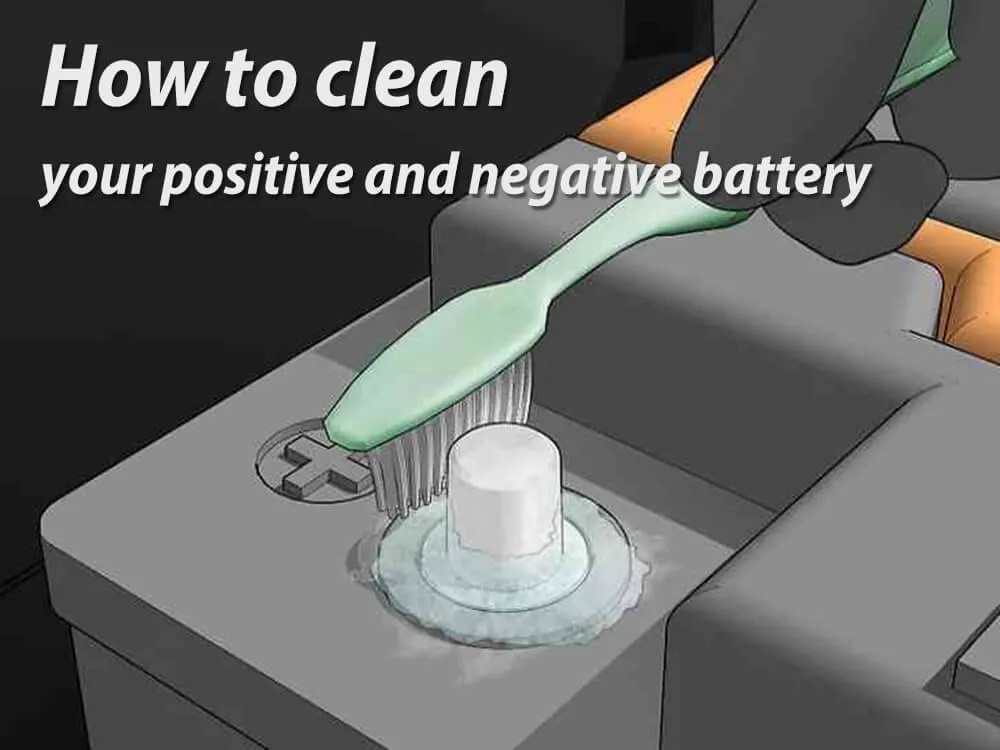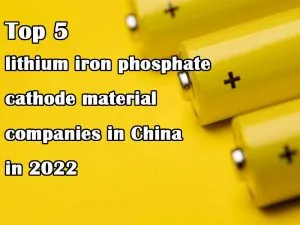How to distinguish positive and negative battery and operation
Batteries are present in every appliance we use in our everyday life. Understanding the basic principles of batteries can help us understand and use batteries correctly, as well as replace batteries.
Let’s start by correctly judging the positive and negative terminals of the battery. Different types of batteries have different positive and negative terminals. The positive terminal of a cylindrical battery is protruding, and the smooth surface is the negative terminal. The aluminum (Al) tab of the pouch battery is the positive electrode, and the nickel (Ni) tab is used as the negative electrode.
This article helps you understand the positive and negative battery parts and how to deal with them to avoid electrical accidents.

How do you know the positive and negative battery packs
Most batteries have labels showing the positive and negative terminals. However, there are instances where the tags can be missing, and it could be challenging to identify the positive and negative battery terminals.
Fortunately, a high percentage of lithium-ion batteries have a plus sign (+) signifying the positive and a minus sign (-) indicating the negative. For the cables, most red cables indicate the positive side while black shows the negative.
How do you distinguish the cylindrical positive and negative battery
Cylindrical batteries have 18650,21700 battery type are often used as hoverboard battery, flashlight battery, etc. When replacing or installing in the battery slot, you need to clear the positive and negative poles of the battery. The easiest way to protect your battery from this is to understand the positive and negative sides of your battery.
One of the most common cylindrical batteries is the 18650 lithium-ion battery. In these batteries, the positive electrode has an aluminum cobalt-oxide coating, while the negative side is made of carbon materials such as silicone and graphite. Additionally, each side of cylindrical batteries has its unique design; The positive end of the cylindrical battery is protruding, and the smooth surface is the negative electrode. And in the battery slot the spring is connected to the smooth negative terminal.
Do I connect the positive or negative battery first
Did you know there is a required procedure for connecting your battery? Well, there is, and we are happy to share it with you. When connecting lithium batteries, connect the positive terminal first, followed by the negative. The opposite is true when disconnecting the Battery; start with the negative terminal, followed by the positive.
How does lithium positive and negative battery work
The general makeup of a lithium-ion battery consists of an anode, a cathode, electrolyte, separator, and positive and negative current collectors. The black negative and red positive anode and cathode respectively hold the lithium.
Lithium ions move from the anode to the cathode through the electrolyte when the battery is charging and vice versa. The separator acts as a shield separating the anode and the cathode.
The direction of lithium ions’ movement determines whether a battery is charging or discharging. When the battery is both discharging and providing an electric current, lithium ions flow from the anode to the cathode, generating electrons that flow between the two sides. When charging, the lithium ions flow from the cathode to the anode, creating a charge at the positive red current collector.
What happens when you connect battery positive to the negative terminal
Battery terminals should be connected correctly and carefully. Failure to do this could damage the battery and cause bodily harm.
In the case of a 12V battery, each terminal requires a 12V current. The positive cable uses +12V while the negative cable uses -12. When the positive cable is connected to the negative terminal, the battery will overcompensate by trying to make the positive 12V into a negative current, cause a short circuit and leading to an uncontrollable power surge that could damage all components.
How to parallel connect positive and negative battery terminals
A parallel connection is used when you want to increase the Amp rating while maintaining the battery voltage. To join the batteries in parallel:
I.Use a jumper cable to connect the two positive battery terminals.
II.Take separate jumpers and connect the negative terminals (marked by the minus (-) sign).
III.To power your device, use a different pair of jumpers and connect the red positive terminal to the positive of your device. Do the same for the negative terminals.
This is how you make a parallel connection. Two 12v 100ah lithium ion battery packs can be connected in parallel to form a 12v 200ah battery pack.
How to connect positive and negative battery terminals in series
Unlike a parallel connection, a series connection will have a constant Amp rating but add on the voltages of the connected batteries. For example, if there are two batteries with 6V and 10Amps, when they are joined in series, the Amps will remain constant at ten while the voltage will change to 12V.
It is essential to use batteries with the exact capacity specifications. To connect in series:
I.Use a jumper cable and connect to the negative terminal of a battery.
II.Using the same jumper cable, connect the other side of the cable used in (I) above and connect to the positive terminal of the second battery.
III.Now, using a different set of jumper cables, connect the battery’s positive terminal to the positive side of your device. With the same cable, connect the battery’s negative terminal to your device’s negative side.
With this, you have a series connection.
How to clean your positive and negative battery
Cleaning lithium ion positive and negative battery components is a delicate matter that requires special attention. The most important thing is ensuring no current is flowing through the battery. If necessary, disconnect the positive and negative battery terminals.
When you cannot disconnect the terminals, gently use hot water to rid the terminals of dirt and debris carefully. Additionally, use a toothbrush to rub off all residue and dry with a clean towel to remove any moisture. Leftover moisture can lead to the terminals rusting.
It is advisable to disconnect the Battery to avoid risks of electrical damage. Other options would be using vinegar or coca-cola instead of hot water. However, vinegar contains acetic acid, which could produce a mild chemical reaction.
Conclusion
Positive and negative battery terminals are marked on your battery using a plus sign (+) and minus sign (-), respectively. Knowing the positive and negative terminals of a Li-Ion battery is essential if you want to successfully connect a battery, no matter what type of battery it is..
However, if you have questions, contact us.


